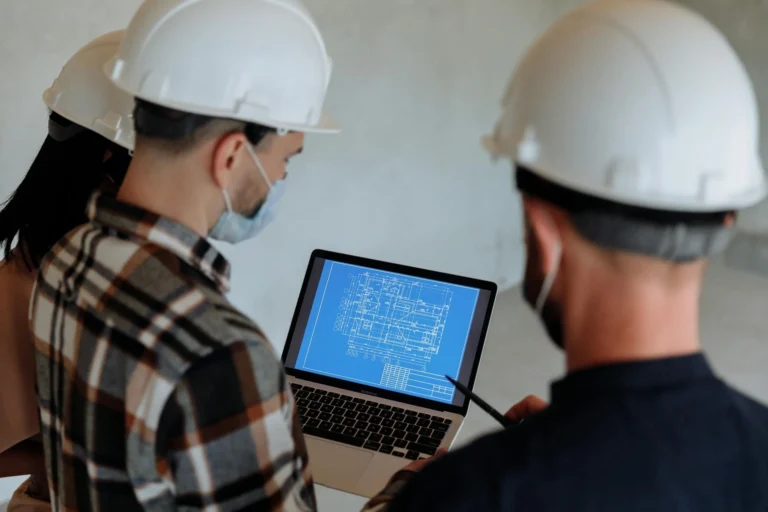The construction industry has long been associated with manual labour, heavy machinery, and traditional building techniques. However, recent technological advancements are disrupting this industry and changing the way builders work. The latest technologies and innovations are transforming the construction industry by providing builders with new tools and methods to improve the efficiency, accuracy, and safety of the construction process.
In this blog, we will explore six of the latest technologies and innovations in the construction industry and examine how they are changing the way builders work. These technologies include BIM, drones, VR, 3D printing, AR, and robotics. We will look at how each of these technologies is being used in the construction industry, their benefits, and the impact they are having on the industry as a whole.

Building Information Modelling (BIM)
Building Information Modelling (BIM) is a technology that has revolutionised the construction industry. BIM creates a virtual 3D model of a building that contains all the information about its design, construction, and maintenance. This helps construction teams to collaborate more effectively, identify potential issues early in the process, and reduce errors and rework. The BIM model can be used to test and analyse different design options, allowing builders to make more informed decisions about the building’s design and construction. This leads to better design decisions and reduces the risk of costly mistakes.
BIM is also used to improve the construction process by facilitating the use of prefabrication and modular construction. With BIM, the components of a building can be designed and fabricated off-site, improving the quality and consistency of the construction process while reducing the time required for on-site work. Additionally, BIM can be used to track the progress of a construction project in real-time, allowing builders to make adjustments and stay on schedule.
Drones
Drones are increasingly being used in the construction industry to capture aerial images and videos of construction sites. This provides builders with a more detailed and accurate view of the site, enabling them to identify potential issues early in the process. Drones can also be used to monitor the progress of construction, allowing builders to track the completion of different tasks and ensure that they are on schedule.
In addition, drones can be used for safety inspections, allowing builders to inspect hard-to-reach areas without the need for workers to climb ladders or scaffolding. This reduces the risk of injury to workers and improves safety on the construction site. Finally, drones can be used to create 3D maps of construction sites, providing builders with a more accurate picture of the site and its surroundings.
Virtual Reality (VR)
Virtual Reality (VR) is a technology that is transforming the construction industry by creating immersive experiences that allow builders to visualise a building before it is constructed. VR technology can be used to create a virtual model of a building that can be explored from all angles. This allows builders to identify potential design issues and make changes before construction begins, reducing the risk of errors and rework.
VR technology is also being used to improve communication and collaboration between construction teams. With VR, all members of the construction team can be brought together to explore the virtual model of the building, allowing them to discuss potential issues and make decisions together. Finally, VR can be used to create training simulations for workers, allowing them to practise working in a virtual environment before starting work on the actual construction site.

3D Printing
3D printing is a technology that is changing the way buildings are constructed. 3D printers can be used to create parts and components for buildings, reducing the need for traditional construction methods. This can help builders to save time and reduce costs, while also increasing the precision and accuracy of the building process.
One of the key advantages of 3D printing is that it can be used to create complex shapes and designs that would be difficult or impossible to achieve with traditional construction methods. This allows builders to create more unique and innovative designs, while also improving the energy efficiency and sustainability of the building. Additionally, 3D printing can be used to produce building components off-site, reducing the amount of on-site work required and improving the speed and efficiency of the construction process.
Augmented Reality (AR)
Augmented Reality (AR) is a technology that overlays digital information onto the real world. In the construction industry, AR is being used to provide workers with additional information about a construction project. AR can be used to create virtual overlays that provide workers with instructions on how to complete a task, as well as additional information about the construction project. This can help to improve the accuracy and speed of construction work, as workers are provided with real-time information that helps them to complete their tasks more efficiently.
AR is also being used to improve communication and collaboration between construction teams. With AR, team members can view virtual overlays of the building project, allowing them to visualise potential design issues and collaborate more effectively. Finally, AR can be used to create immersive experiences for clients, allowing them to visualise the building project before it is constructed.
Robotics
Robotics is a technology that is transforming the construction industry by automating many of the tasks that were previously done by human workers. Robotic technologies can be used for a wide range of tasks, including excavation, bricklaying, and welding. By automating these tasks, builders can improve the efficiency and accuracy of the construction process, while also reducing the risk of injury to workers.
One of the key advantages of robotics is that they can be used to complete tasks that are difficult or dangerous for human workers to perform. For example, robots can be used to perform tasks in areas that are difficult to access or that pose a risk to human workers. Additionally, robotics can be used to improve the speed and accuracy of construction work, as robots are able to complete tasks more quickly and consistently than human workers.
The construction industry is undergoing a major transformation, thanks to the latest technologies and innovations. These advancements are providing builders with new tools and methods to improve the efficiency, accuracy, and safety of the construction process. The technologies discussed in this blog, including BIM, drones, VR, 3D printing, AR, and robotics, are just a few examples of how the industry is evolving.
By embracing these new technologies, builders can save time and money, reduce the risk of injuries, and create more sustainable and innovative buildings. However, it is important to note that the adoption of these technologies is not without challenges. Builders must be willing to invest in training their workers and upgrading their equipment to effectively integrate these new technologies into their processes.
As the construction industry continues to evolve, we can expect to see more technological advancements in the future. These advancements will undoubtedly have a significant impact on the industry and change the way builders work for years to come. It is up to the industry as a whole to stay informed, embrace these new technologies, and adapt to the ever-changing landscape of construction.
If you are looking for a way to add value to your construction projects and embrace emerging technologies, Wunderbuild’s construction management software may be just what you need. It is offering a free trial, try it here today!



